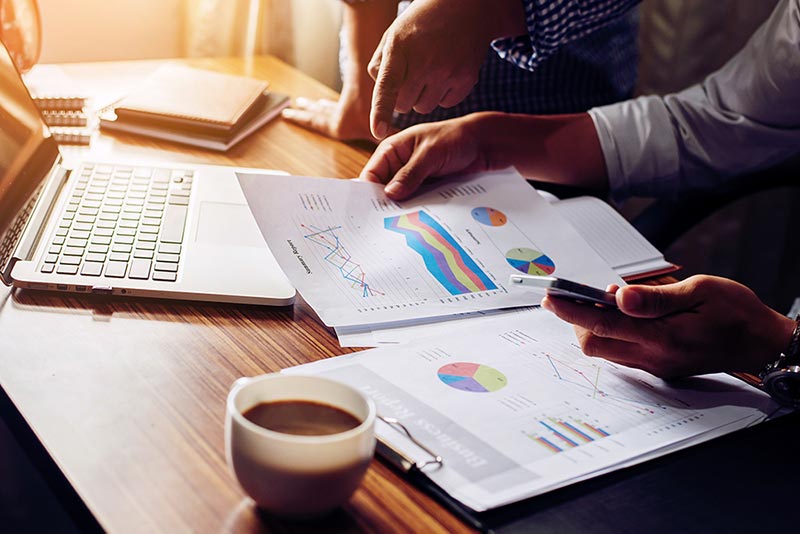Like the idea of owning your own small part of some of the world’s largest and fastest growing companies? Maybe you want to tap into the growth potential of emerging economies, or get in early on the next big thing in technology. To achieve these investment goals you’ll need to look beyond Australia’s shores to access a wide range of investment opportunities that are simply not available on the local market. It starts with investing in overseas shares.
Why invest in overseas shares?
While we have our local success stories, we don’t really have the equivalent of the FAANGs (Facebook, Apple, Amazon, Netflix and Google) that have generated much of the growth in the US markets. Nor do we have a local Toyota or Tesla, Nike or Boeing. Tapping into the growth potential of these companies requires investment in overseas shares. The New York Stock Exchange alone is around 20 times bigger than the Australian Stock Exchange. That means more companies engaged in a wider range of businesses offering a bigger universe of opportunities.
Then there are emerging markets. China and India are two large economies that have grown rapidly for a number of years, and buying the right shares in these markets allows investors to access this growth.
Because different economies, sectors, technologies and geographies perform differently at different times, investing in a range of international shares provides a diversification benefit that, over the medium to long term, helps to reduce investment risk while maintaining returns.
How to invest in overseas shares
There are two main ways to invest in overseas shares:
Direct share purchase. Most stockbrokers offer clients the opportunity to buy international shares, though they may only provide access to a limited number of markets. Also, an international custodian may legally hold the shares, although you’ll have the right of beneficial ownership.
Managed funds. Investors can choose from a wide range of funds that provide exposure to many different markets (regional or country-specific), technologies (biotech, lithium, cleantech, resources), or management styles (high dividend funds versus growth funds). At the fund level, a professional manager makes investment decisions, relieving investors of this crucial task.
Managed funds may be unlisted, in which case units are bought from and redeemed with the manager. There are also exchange-traded funds (ETFs), where units are bought and sold on the Australian share market in much the same way as direct shares. ETFs usually track a specific index, and this ‘passive’ approach means they often charge lower fees than actively managed unlisted funds. As ETFs can be bought and sold whenever the market is trading, they provide quicker entry and exit from your investment than is the case with unlisted funds.
Currency concerns
When you invest in international shares you are effectively investing in two asset classes – the shares themselves and the currency of your overseas investment. In fact there may be periods when currency movements have a greater impact on your investment performance than any changes in the underlying share price.
Given a steady share price, if the Australian dollar falls in value against the currency your investment is held in, then the value of your investment in Australian dollars will increase. However, if the investment’s currency falls against the Australian dollar, than the value of your holding in Australian dollars will also fall.
Some managed funds use hedging to provide protection against changes in exchange rates. This means the value of your holding in Australian dollars should primarily be determined by investment performance, not currency movements. However, hedging comes at a cost, so while it may decrease risk, the extra cost may also decrease net returns.
Create a plan
Whether you opt for managed funds, direct investment or a bit of both, it’s important to understand exactly what you are investing in. When buying shares directly, specific company research may be harder to come by, particularly for smaller companies and emerging markets. This leads to higher risk. With managed funds you need to understand the manager’s style, focus (large companies, small companies, specific technologies or other themes), and whether currency exposure is hedged.
You also need to understand how dividends and capital gains are taxed. This varies from country to country, and you may need to complete some paperwork to reap the benefits of Australia’s tax treaties with other countries, and not pay any more tax than you need to.
Remember that international shares should only form part of a well-diversified portfolio. And as one of the more volatile (i.e. higher risk) assets, expect values to fall occasionally as well as rise. Put together an investment plan detailing what you want to invest in, how, and how much. By all means undertake your own research, but talk with your stockbroker or financial planner, too.
Embrace the opportunity
Whether it’s through direct shares or managed funds there’s a place for international shares in most portfolios, and it’s never been easier to grab yourself a piece of iconic brands such as Apple and Meta. If you want to own a piece of the big end of town, dabble in niche markets or buy into tomorrow’s world-changing technologies, opportunity awaits. If you follow the rules of sensible investing in overseas shares, it could be a very lucrative move indeed. If you would you like to have an obligation-free chat on this, give me a call to see how I can help you.
This article contains information that is general in nature. It does not take into account the objectives, financial situation or needs of any particular person. You need to consider your financial situation and needs before making any decisions based on this information.

